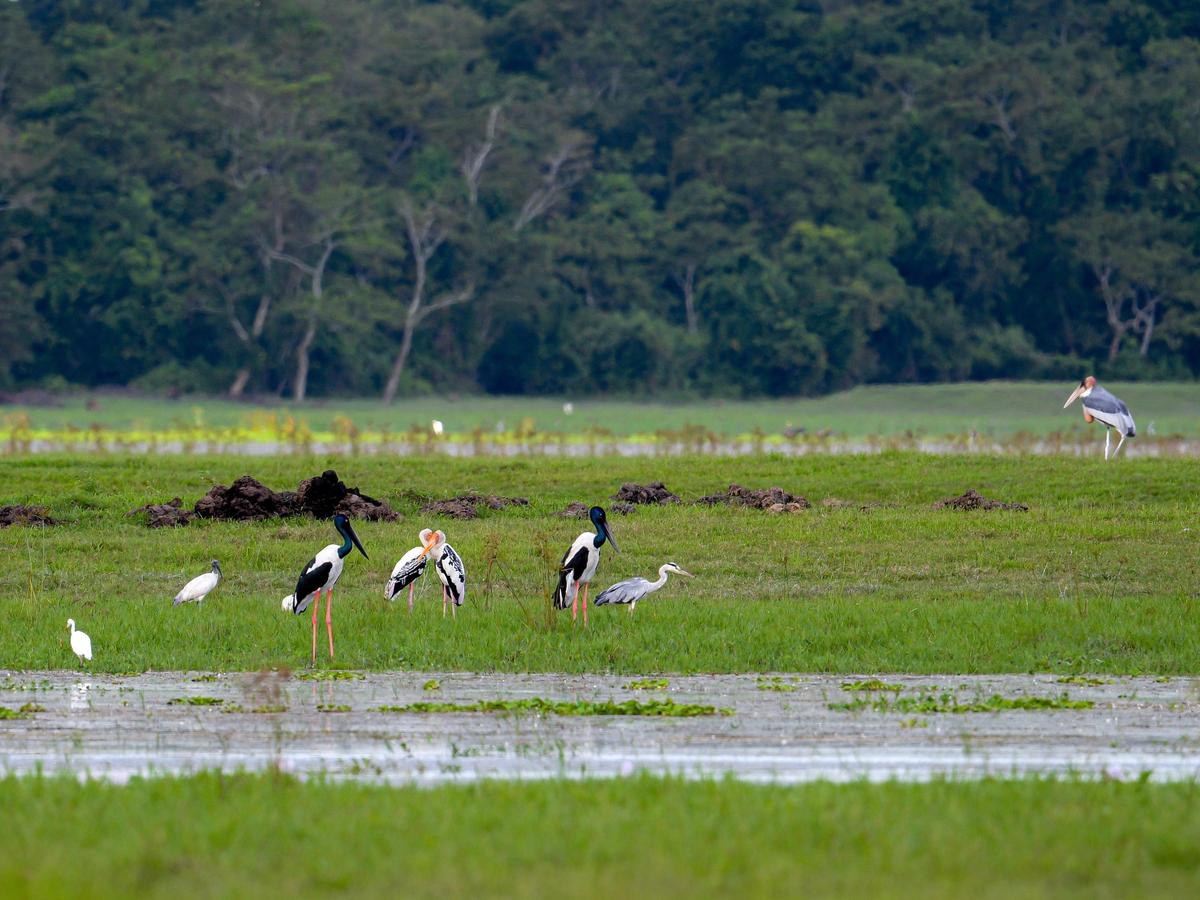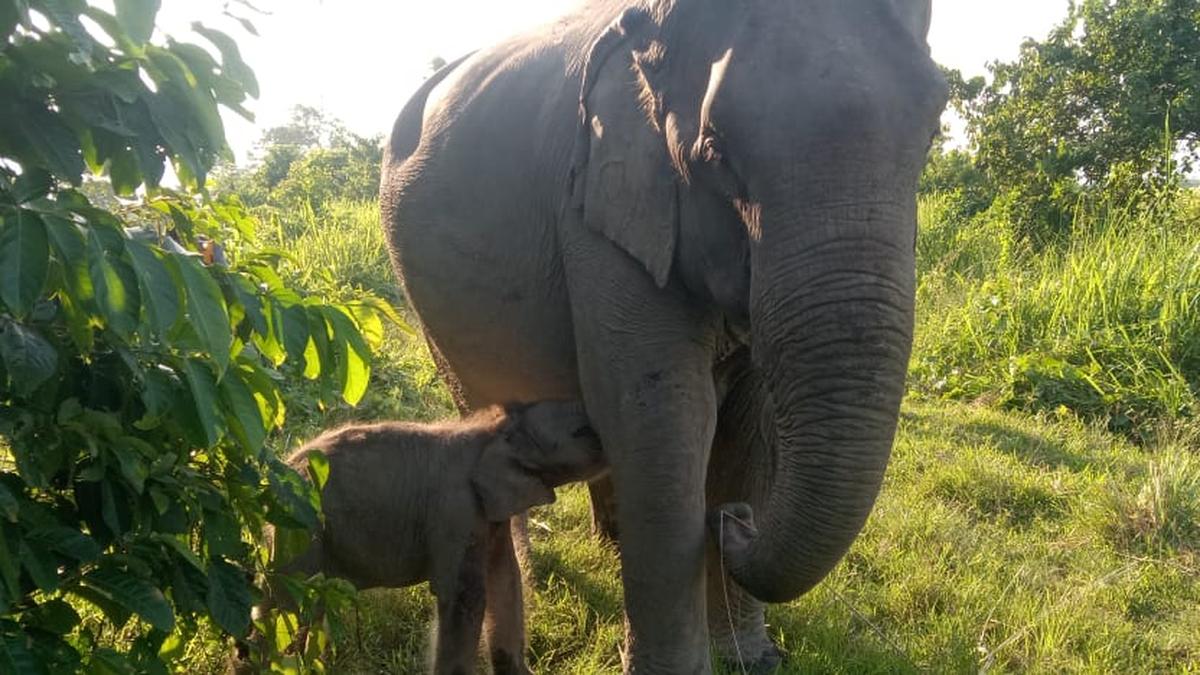
The newborn Mayabini with her mother Kuwari in eastern Assam’s Kaziranga National Park.
| Photo Credit: Special Arrangement
GUWAHATI
A female calf born to one of the oldest elephants serving the Assam Forest Department has been named Mayabini to honour Zubeen Garg, the Assamese cultural icon who died in Singapore on September 19.
Kuwari, who has been with the Kaziranga National Park and Tiger Reserve for almost four decades, gave birth to Mayabini at the stroke of noon on October 4. The calf was her second offspring after Griharaj a few years ago.
Announcing the birth of the healthy female calf, Assam’s Forest Minister Chandra Mohan Patowary said her name, chosen with “immense affection and public goodwill”, would convey “new life, hope, and harmony in the wild”.
The calf’s name has been derived from Mayabini raatir bukut (In the heart of this magical night), one of Garg’s favourite songs that became an anthem for his fans after his death.
“Kuwari has been with Kaziranga since 1986. She was handed over to our Eastern Range in 2014 after serving the Central Range, Kohora,” Sonali Ghosh, the Director of the tiger reserve, told The Hindu on Sunday (October 5, 2025).

The migratory painted stork recorded in Kaziranga after three years.
| Photo Credit:
Special Arrangement
Earlier, the Kaziranga authorities reported the sighting of the migratory painted stork (Mycteria leucocephala) in the national park after three years. Known globally as the best address of the one-horned rhinos and tigers, Kaziranga is a UNESCO World Heritage Site.
The large wading bird belonging to the stork family Ciconiidae, recognisable by its striking plumage with rose-pink tertial feathers, black and white markings, and a long yellow-orange bill, was last sighted in Kaziranga during the migratory waterfowl census in 2022.
The painted stork, classified as near threatened by the International Union for Conservation of Nature, was first recorded in Kaziranga in 2004. The only other sighting before 2022 was in 2005.
Wildlife officials said the sighting of a pair of painted storks on October 3 was significant, as it coincided with the arrival of winter migratory birds in Kaziranga. The species is distributed across the Indian subcontinent and parts of Southeast Asia, but is threatened due to habitat loss, wetland degradation, and disturbances in breeding colonies.
Published – October 05, 2025 11:28 am IST























